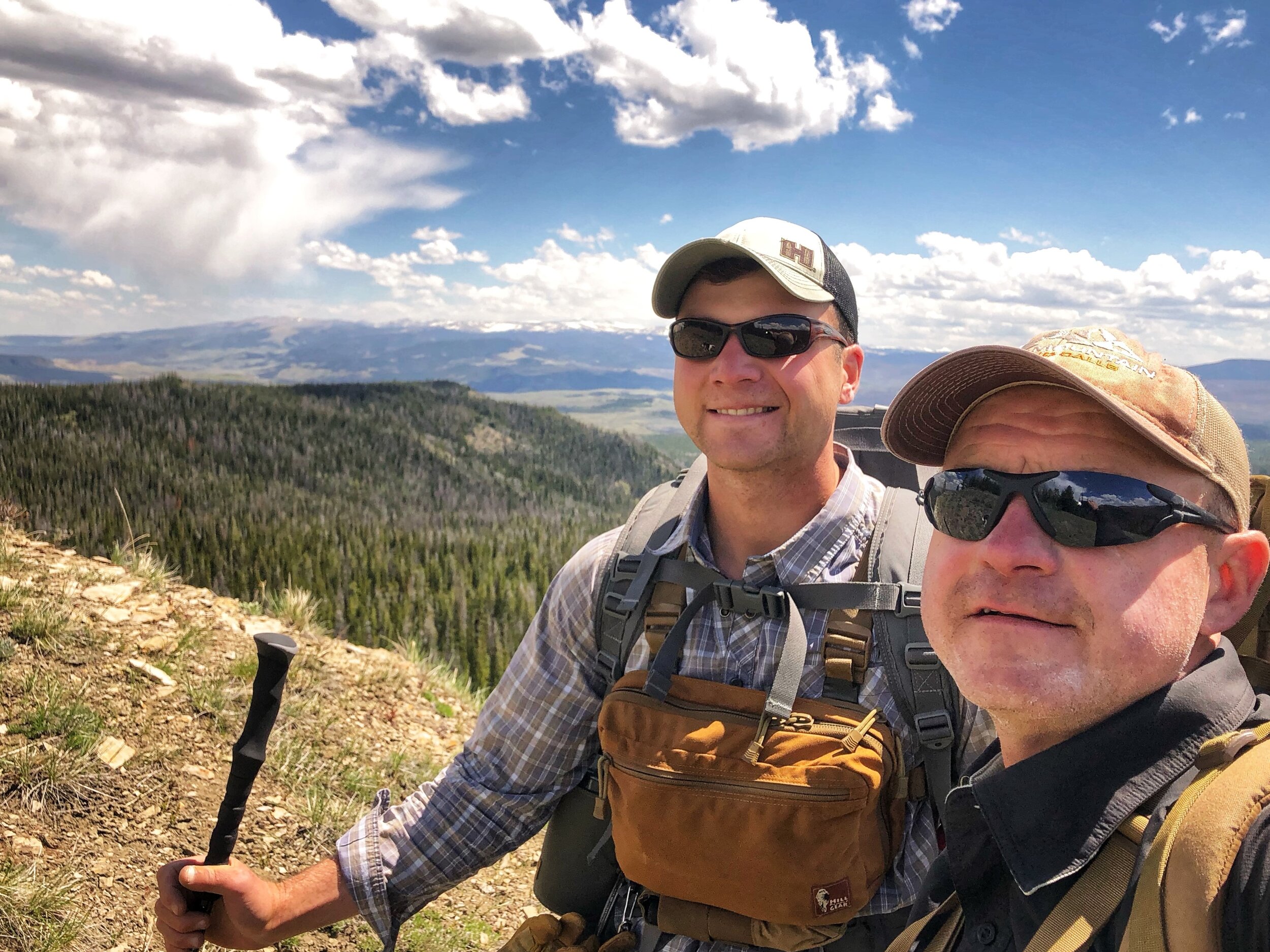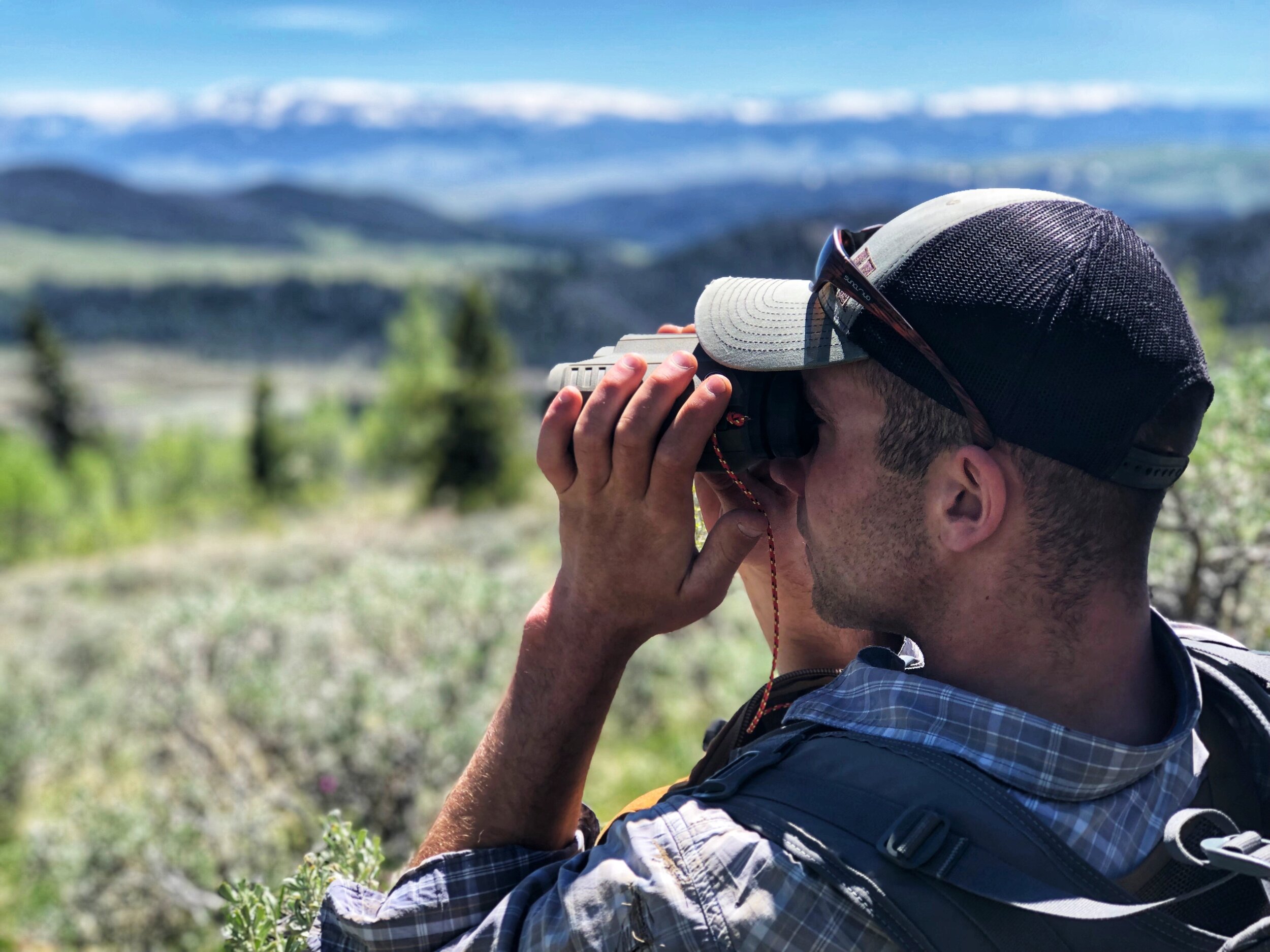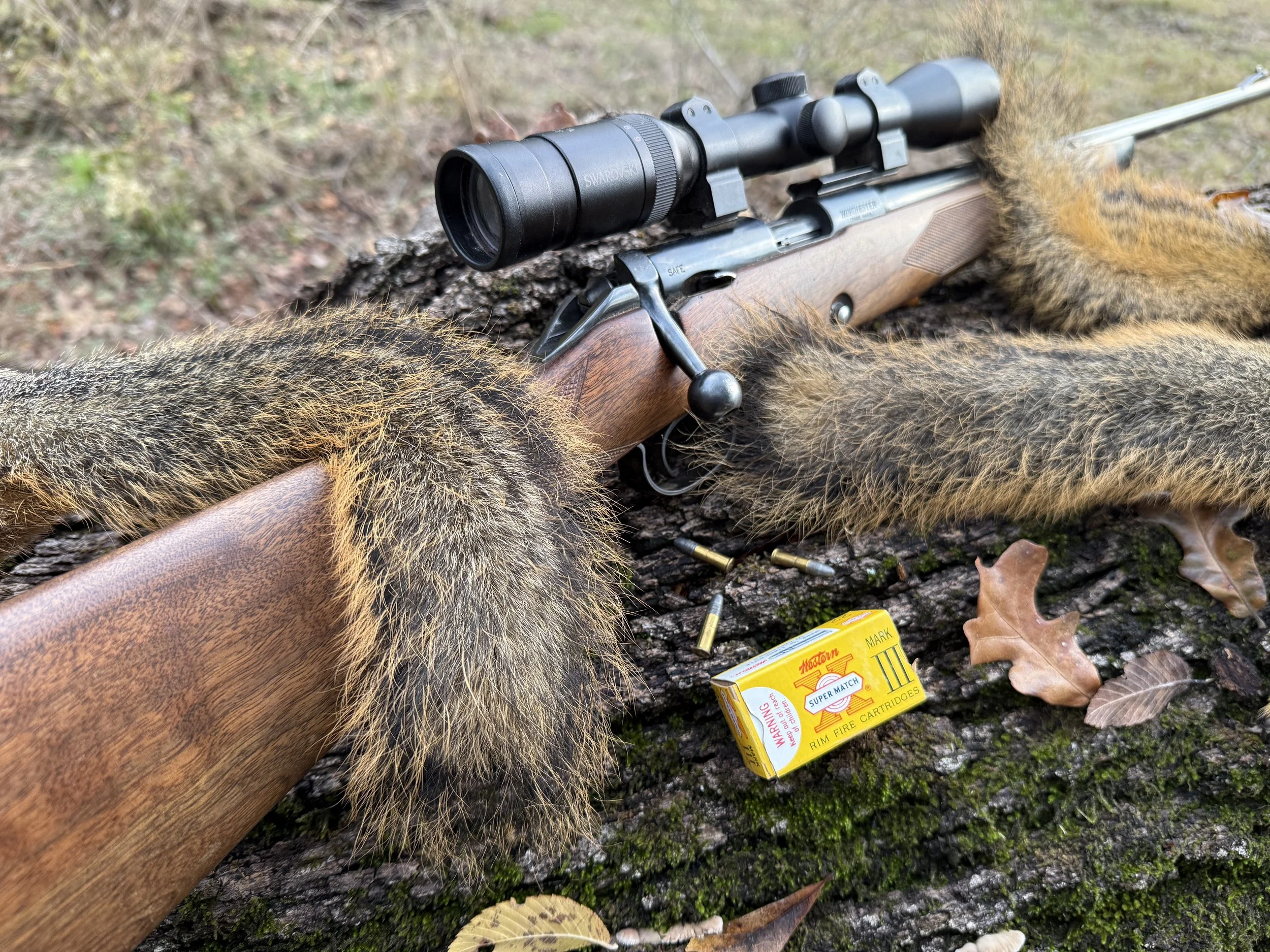Put an Elk Plan Together This Summer With Scouting
Mark and Cole Kayser summit a peak to investigate another basin for later elk hunting opportunitiesThe good and bad news has arrived for many of you elk aficionados. Some of you drew premium tags and others, like me, are destined to hunt general units with the rest of the crowd. No worries. It is summer so you still have time to put a plan together for the coming fall. Feeling the coming unluckiness in the elk draw, I met up with my son, on leave from the military, to scout a general unit in my home state of Wyoming. It was a good move as later I discovered I did not draw an elk tag in a controlled hunting unit. My jumpstart helped me get a solid understanding of what I am up against if I decide to hunt a new general unit.
GOOGLE MAPS
Cole Kayser, Mark's son, makes notes on his HuntStand hunting app of a particularly good-looking elk basinI rarely use Google maps, but the slapstick reference stresses the importance of knowing access routes in and around a new hunting unit. That was a main goal of my summer visit to the new hunting area. By driving forest service roads, buzzing down ATV trails and hiking, we were able to ascertain the easiest routes into suspected elk hangouts. I timed rides to trailheads and estimated how far I would need to hike in the fall to reach good elk hunting. This preseason glimpse is invaluable while deciding whether you need a spike camp or if you can camp conventionally at a trailhead with tent, or camper. Everything is noted on my HuntStand hunting app to be used later during the heat of the hunt.
Speaking of camping, the preseason visit also allowed me to look for a campsite for my hillbilly horse trailer camp. Sometimes I take my livestock into the backcountry while other times I ramp my ATV into the back of my horse trailer. Upon arriving, I unload the ATV and convert the horse compartment into a comfortable camp with cots, a kitchen and propane heat. It is not a cabin, but it does keep the rain and snow off me, plus it allows me to dry gear out faster than in a tent camp. Next up is locating possible elk hunting areas and this is the system I follow.
HIGH COUNTRY BABYSITTERS
It did not take me long to find elk in the new hunting area. I simply woke up, looked out of the cab of my truck (yes, I was sleeping on the front seat) and spotted a bull elk, along with a later herd of cows, walking past camp. From there I hit the slopes to find herds of summer elk. Since herds of cows are typically easier to spot, I focus on that chore first. These large concentrations of cows and calves may not be on your hit list, but they can lead you into the zone of a nearby bull or bugle.
Cows lounging in a high-country nursery area as viewed through a spotting scopeCow elk traditionally return to the same general area year after year to birth and raise their newborn calves. Characterized by high country meadows with lush vegetation and nearby escape cover, these areas can attract dozens and even hundreds of cows, and their young. Alpine zones with aspen refuge fit the criteria as do vast parks at high elevations ringed by pine, fir and spruce. As young calves gain enough strength to follow the herd, cows band together to protect young. The large assembly of adult females discourages hungry predators from targeting young, at least with consistency. It is a communal babysitting behavior that has been successful for thousands of years to replenish the herd. These herds often stay in and around the same summer range through the early days of September leading into the beginning of the rut. Locating established elk calving and summer ranges can be the answer to early-season bull locations.
BACHELOR PARTY
Elk bulls spending a day grazing in the summer high countryCole Kayser, Mark's son, glasses open areas for signs of elk during a summer scouting tripIt is common knowledge that mature bulls do not immerse themselves in summer nursery herds. Nevertheless, during the summer and early fall mature bulls oftentimes set up camp nearby. More than once I have taken a perch on a high vantage point to view a herd of cows and calves, and then swung my binocular to an adjacent canyon only to discover a bachelor group of bulls less than a mile from the gal pack.
The reason bulls are nearby is simple. Bulls also require nutritious feed. And even though they do not fully appreciate the presence of females during the summer months, they oftentimes share the same habitat resources, especially in the grocery aisles. Cows rely on high quality forage for optimum health and milk production for their young. Bulls are invested in piling on fat reserves for the rut and high nutrition for growing antlers, nearly an inch a day during the peak of the summer. All these energy-sapping elements require tons of green feed.
Use your time wisely in the summer and you should be able to locate elk herds that you can track later for hunting success.
SURVEY YOUR SAFETY
Signs like this make you think about the area you are hunting and safety concernsFinally, I like to survey safety concerns. Reviewing hiking routes, terrain difficulties and creek crossing scenarios provides you with intel on where, and where not to go. Since I often hunt alone, I try to avoid scree slopes, incredibly steep ascents and any wild water crossings. I found a couple of deep creeks and at least one steep canyon I plan on avoiding if I hunt this new unit. My biggest challenge are grizzly bears though.
This new area is known for a high population of grizzly bears that range across the unit. Having a partner would be best, but regardless, I will be carrying bear spray and a sidearm during archery season. Bear spray and my elk rifle will be my partner later if I need to continue hunting during the firearm season. In addition to those precautions, I always pack enough survival gear in my backpack to survive a couple days in case of the worst.
Summer will be gone before you know it, but take at least one weekend to scout your elk hunting area. The bugles will be here before you know it.
For more about Mark Kayser and ways to follow him on social media, visit www.markkayser.com.
CONTACT INFORMATION
Mark Kayser Hunting Lifestyle www.markkayser.com
HuntStand Hunting App and Map Printing www.huntstand.com
Alps OutdoorZ Commander X + Pack www.alpsbrands.com/alpsoutdoorz
Sig Sauer Electro-Optics ZULU7 10x42 mm HDX Binocular www.sigsauer.com/electro-optics
Wildlife Research Center Scent Killer Gold Field Wipes (when nature calls) www.wildlife.com
Cabela’s Hunting Boots, Zamberlan Saguaro GTX Boot www.cabelas.com










